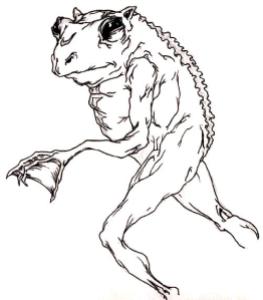 When Ottorini Respighi wrote his symphonic poem Pines of Rome, he was not imagining flying whales. Instead, the last movement of his work invokes the imagery of a Roman Legion marching along the Via Appia Antica. When I would listen to the drumming and droning of the orchestra I never imagined whales flying either, at least prior to the year 2000.
When Ottorini Respighi wrote his symphonic poem Pines of Rome, he was not imagining flying whales. Instead, the last movement of his work invokes the imagery of a Roman Legion marching along the Via Appia Antica. When I would listen to the drumming and droning of the orchestra I never imagined whales flying either, at least prior to the year 2000.
But somebody at Disney Studios did, as evidenced by Fantasia 2000. The flying whales animation, accompanied by Respighi’s score, is now one of my favorite segments of the Fantasia 2000 DVD.
With a name like Fantasia, we should fully expect fantasy, fantasy being defined as an art form devoid of any requirements for plausible scientific foundations. And Fantasia has always delivered that art form in abundance.
In contrast, science fiction may have fantastic elements in it, but there is an expectation that the writers’ creations be somewhat defensible on the basis of known scientific principles. So, what if whales could fly? What would be the real world consequences of such an improbable occurrence? What does science have to say about it?
For one thing, flying whale babies would not have to worry about being eaten by Orcas, as mentioned in my last posting. So whale populations would increase, unless the inexperienced calves flew into wind farms and airplanes.
As a pilot and airline passenger, my first concern would be whether airborne whales could be detected on radar. Is the whale’s smoothly rounded shape, it’s tough but flexible skin and potentially radar absorbing blubber stealthy in the same way that stealth bombers elude detection by radar? If so, the air traffic control system would have real problems. Sure, flying whales would be easy to see in day light, but can you imagine encountering them at night or in clouds without benefit of radar? I shudder to think. 
And yes, whales migrate continuously, night and day, so they would be a gargantuan risk to air traffic in low visibility conditions. Compared to a whale strike, bird strikes would be a minor affair.
What if flying whales blunder into restricted air space, like over the White House? There are missiles there, I hear, capable of shooting down intruders. But would I want to be the one to pull a trigger that blows a whale to blubbery bits all over Washington D.C.?
Perhaps whales would be granted an exempt status, like migrating geese. But what if terrorists took advantage of that and managed to bring down an intact whale in the middle of the White House Rose Garden? I haven’t calculated the kinetic energy of a full grown falling Gray Whale, but at a weight of 40 tons or so, I doubt anything trapped under the whale would survive the impact.
Unfortunately, a science fiction writer envisioning flying whales can’t avoid the inevitability of whale poop. While bird poop is an inconvenience, falling whale products of digestion would likely prove lethal. What a lousy way to die. (OK, I admit I was thinking of using a different adjective.)
The Achilles’ heel of any flying whale story would have to be buoyancy. It has been estimated that approximately half of a grown whale’s weight is derived from blubber. What if a whale replaced all of its blubber with hydrogen? [While I could choose helium as a buoyant gas, helium is not produced biologically, whereas hydrogen is, as a product of flatulence.]
Hydrogen has a specific buoyancy of approximately 71 lbs per 1000 cubic ft, so a 20,000 lb whale (stripped of all blubber) would need about 282,000 cubic feet of hydrogen to be neutrally buoyant (to float in air). To put that into perspective, the Goodyear Blimp weights 12,840 lbs, and has a volume of 202,7oo cubic feet. So a flying whale would have to be roughly 50% larger than the Goodyear blimp. [I leave a more exact calculation to high school physics students looking for an imaginative problem to solve.] 
From a science fiction standpoint, that is entirely conceivable. Buoyant whales would be much larger than modern whales.
As for a means of propulsion, I don’t think whale fins would suffice; they don’t look enough like wings. But with a little imagination, I bet most school kids could think of a means of propulsion that would be akin to, dare I say, jet propulsion.
I think I now have the makings of a science fiction novel. I’ve got the science figured out: all I need now is a plot and some interesting human characters.
To be continued, perhaps …














